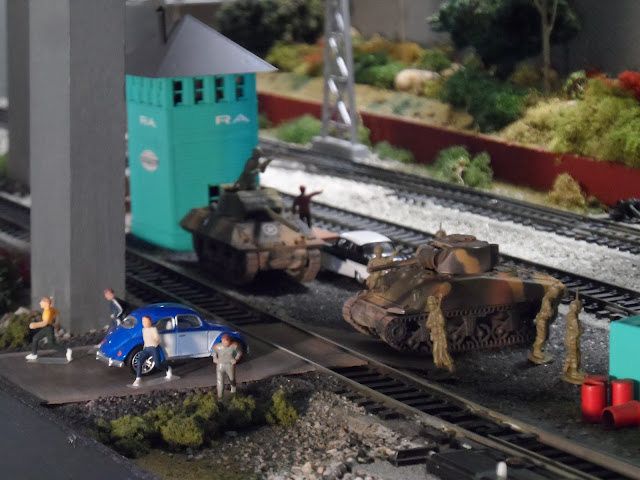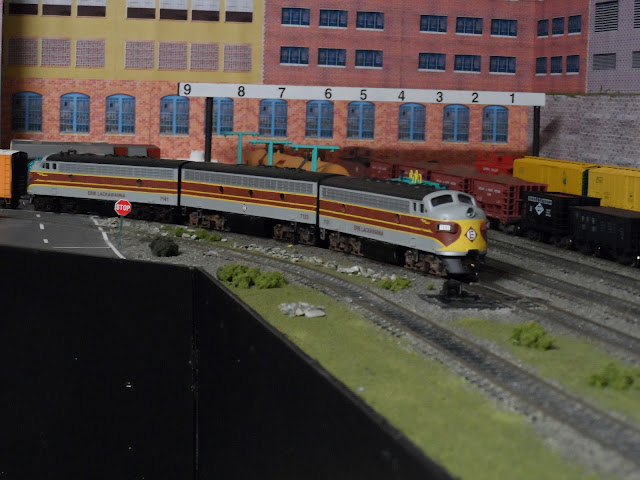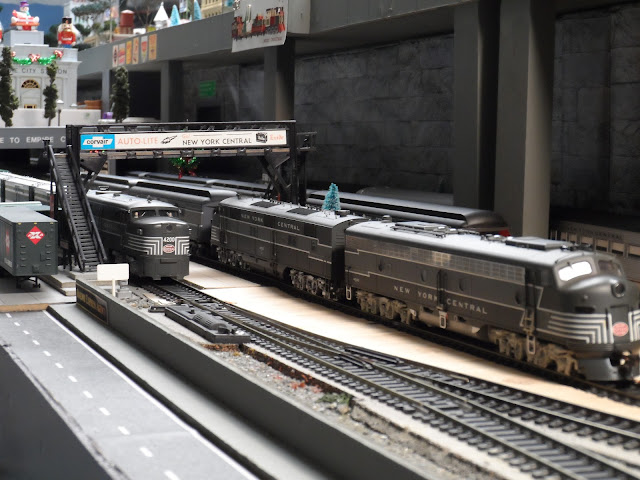Greetings All,
Let it Snow!!!
HO Scale Russell Snow Plows Ready For Service
Two Walthers 1:87 scale Russell Snowplows that have been part of my imagined snow fighting equipment for about seven plus years are now (finally!!) ready for service and movement around the layout.
Prototype Information
Railroad snow plows may be some of the least used pieces of maintenance equipment a railroad owns. However, they are also some of the most important when called upon to open a rail line that is buried in several inches or feet of snow. Note the coupler on the plow end.
"Straburg RR 66, Russell Size 2 Snowplow, Built 1890 ; Railroad Musuem of Pennslyvania, Lancaster PA; Undated" by San Diego Model Railroad Museum is licensed under CC BY-NC-ND 2.0. To view a copy of this license, visit https://creativecommons.org/licenses/by-nc-nd/2.0/?ref=openverse.
One of the most common types of wedge plows were those built by the Russell Snow Plow Company, which began manufacturing the machines after World War I.
"Snow Plow Engine" by johnwilliamsphd is licensed under CC BY-NC-SA 2.0. To view a copy of this license, visit https://creativecommons.org/licenses/by-nc-sa/2.0/?ref=openverse.
The Russell wedge type all-steel snowplow used by railroads since the 1920s to clear snow from rail lines are pushed by a locomotive because they don't have their own power.
"Russell Single-Track Snow Plow" by johnwilliamsphd is licensed under CC BY-NC-SA 2.0. To view a copy of this license, visit https://creativecommons.org/licenses/by-nc-sa/2.0/?ref=openverse.A Russell Snowplow at work.
Developed with a bit of versatility, Russell's were equipped with wings attached to the outside of what was known as the "tongue" (the wedge device that actually plowed the snow clear of the track), which could be adjusted.
The Russell snow plow itself was usually attached to the front of either a customized railcar of some type with a pilot house attached to the top for the spotting crew.
My first Russell snowplow was a Walthers kit that was a Christmas gift from my late mother in law in 2017. She loved shopping for trains and other things that she thought would look good on the layout. I built and painted it as part of the New York Central snow fighting equipment. Look closely you can see the in-laws in the cab. One issue that quickly reared up was the Walthers snow plows did not come with front coupler pockets. This made moving them around the layout limited and awkward.
Six years later I came across this after market coupler pocket kit designed to fit the Walthers Russell Snowplows. The coupler pocket however is very narrow and calls for a Kadee #4 coupler. Good luck trying to find one, it looks like they are no longer produced. This stalled the project for about a year. Finally, in early November with 1/87 scale snow on the horizon I came up with an alternate way to install a Kadee #158 scale coupler.
I ended up placing the #158 in front of the coupler pocket post and securing it in place with CA. Then I secured the lid, my fingers and the whole assembly to the plow. The coupler matched the Kadee Height Gauge perfectly. After the test run the snowplow Extra holds on the Water Street lead for several passenger trains before heading back to Terminal Yard.
You Don't See This Everyday!!!
A NYC passenger train derailed in the Bedford Station tunnel due to a McHenry coupler coupler coming off its post on an IHC car derailing the car behind it. After the train arrived at Terminal Station, the passengers were put off, the offending car removed and the plow was coupled onto the Pullman car at left to be shoved back into to the tunnel to clear the coupler off the tracks. That done it coupled onto the Pullman car at right and the train arrived back in Terminal Yard.
The 236 did clear the line however I still had open the tunnel and use a long pair of tweezers to remove the offending coupler. I had been hoping the plow would shove the coupler out of the tunnel but true to its design it plowed the coupler off to the side. Final Thoughts and Comments
I was worried that by securing the couplers into the box with CA would limit their use on curves but that proved to not be the case. The #158 attached in this manner protrudes more than if I was able to secure it around the post in the coupler pocket. Since it is attached to a snow plow that extra length may be a good thing.
Some of the above prototype comes courtesy of Adam Burns and the American Rails website. For more on the RR snowplows click here. Thanks for reading!!!
See you soon!!!


























































